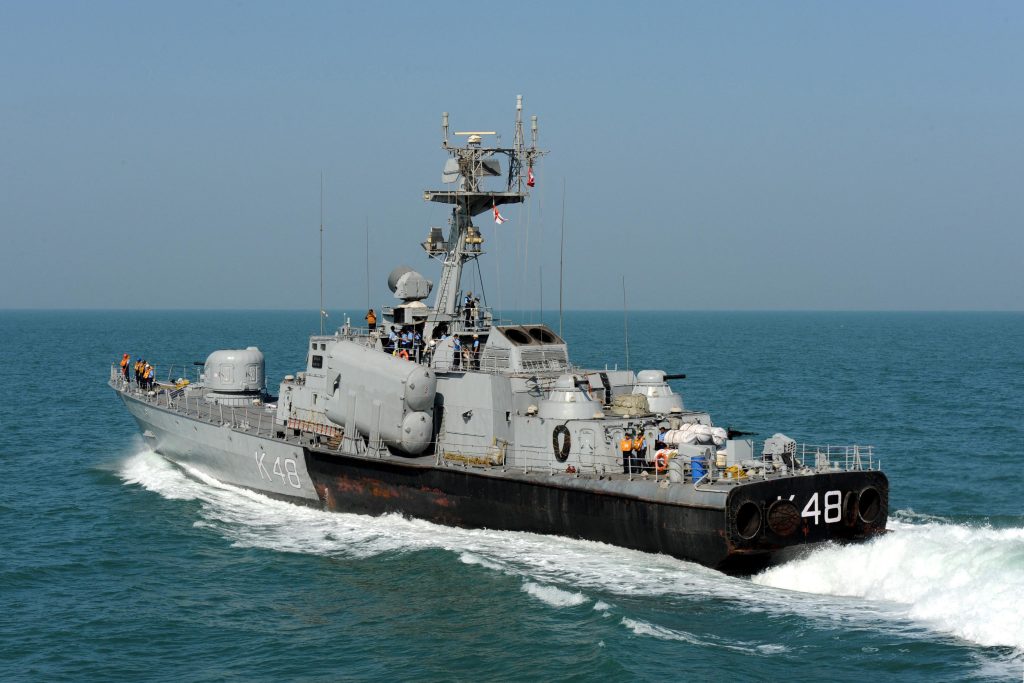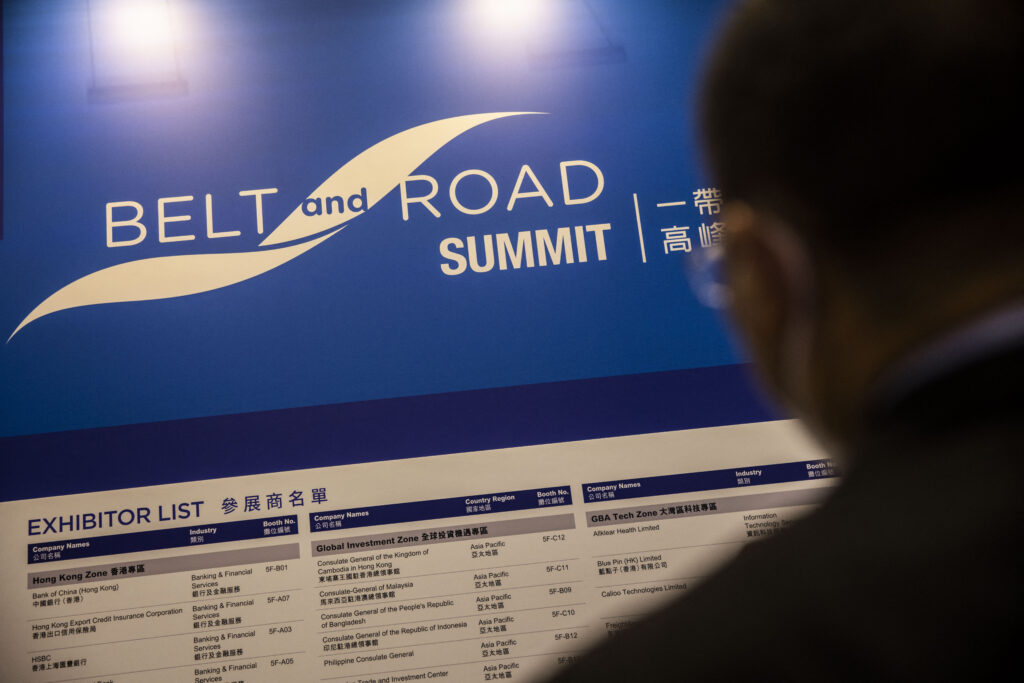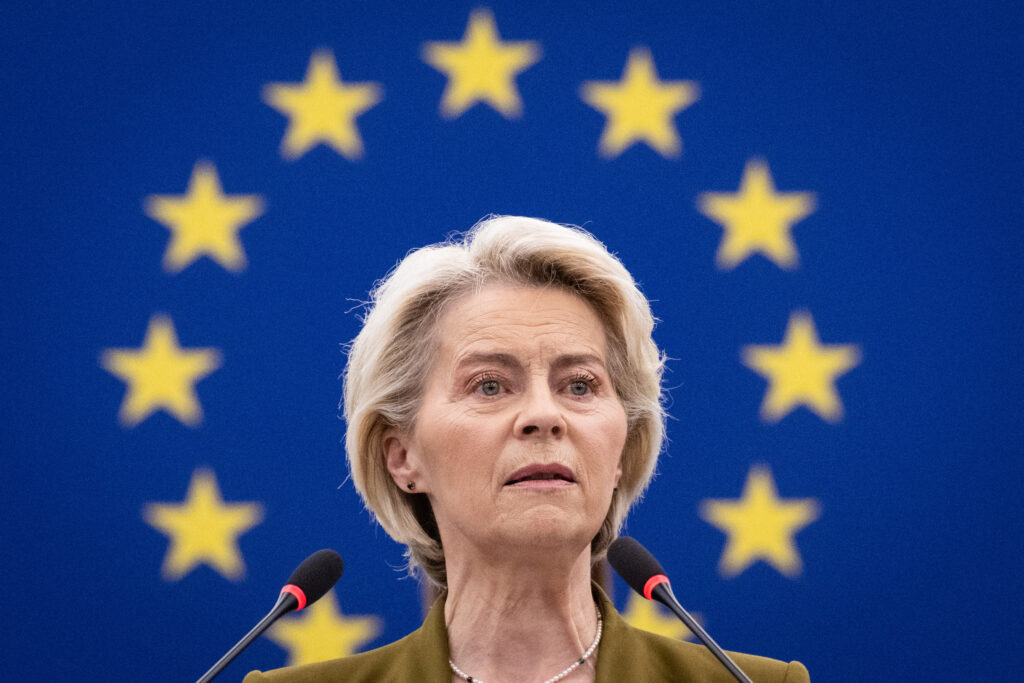Series Introduction
Maritime Strategies in the Middle East
The Middle East is a major area of maritime trade, given the vast oil supplies in the Persian Gulf region and several gas exploitation and exploration projects in the Mediterranean. The development of these prospects and maritime trade, however, are threatened by acts of piracy and terrorist attacks in the waters between the Suez Canal and the Strait of Hormuz. Such threats have frequently prompted insurance companies to raise their premiums for merchant ships that navigate these waters. In addition, the Middle East has been the arena of fierce competition not only among the external actors who have economic and strategic interests in the region but also among local powers aiming to position themselves as the uncontested hub for maritime freight. The papers in this series of Insights explore how the countries of the Middle East and key external actors envision their maritime strategies for the region.
CLICK HERE FOR THE PDF
By Frederic Grare*
This article explores the economic and political determinants of India’s greater naval involvement in the Gulf region since the turn of the century. It argues that economic and political relations have developed faster than India’s capacities to mount a full-fledged maritime security role in the region. Since India’s growing security involvement in the Gulf region is a strategic consequence of its growing economic relations with the region, it is bound to lag behind the country’s economic presence. India remains dependent on the US naval presence in the Gulf in an environment increasingly characterised by tense relations with China.
Asking whether India is a maritime player in the broader Middle East can seem surprising, if not counterintuitive. Located astride critical sea lanes, between the straits of Bab del-Mandeb on one side and Malacca on the other, India should be seen as a natural actor in the Gulf maritime security landscape. Yet, India’s maritime role in the region is relatively new, confined for many years following independence to the waters adjacent to its littoral, with no real capacity to go beyond the Bay of Bengal on the east and the Arabian Sea on the west.[1]
However, this situation has evolved considerably since the beginning of the 2000s, when New Delhi started redefining its interests in the western Indian Ocean Region. The Indian navy embarked on capacity building and security cooperation with the Arab Gulf states as part of the “Look West Policy” initiated in 2005 by Prime Minister Manmohan Singh and continued by his successor, Narendra Modi, who put more emphasis on the security dimension of the policy. In pursuing this policy, both prime ministers intended to address the need to guarantee India’s energy security as well as the growing political unpredictability and deteriorating security that characterised the Gulf, in particular after the terrorist attacks of 11 September 2001, a situation complicated by China’s increasingly invasive presence.
The development of the Indian navy’s role in the Gulf had been inhibited by several factors. Pakistan’s close relations with several Gulf countries were a major one. Against Islamabad’s opposition, India managed to develop strong security partnerships with several Arab Gulf countries in recent years. Relations with Oman and the United Arab Emirates (UAE) intensified, for example. Yet, continued closeness between Pakistan and many Gulf countries impinged on India’s room for geopolitical manoeuvring in the region. Differences with Arab Gulf countries over Iran, with which India, against US opposition, maintained political ties, also played their role.
But despite real improvements, the main impediment to Delhi’s naval ambition in the region remains the Gulf states’ weak perception of India as a significant player in the Gulf. Cooperation between India and these states has intensified but remains limited to non-traditional security issues. Prospects for further developments are real, but the process is likely to be incremental as India may have to reassess its military priorities: the Covid-19 pandemic will have constrained India’s resources, while the continuing tensions with China on the Himalayan border, particularly since the 2020 clashes in the Galwan valley, may once again affect the navy’s budgetary allocation in favour of the army. As a result, India may have to keep relying on US forces for the security of the Gulf region.
This article explores the economic and political determinants of India’s greater naval involvement in the Gulf region since the turn of the century. It argues that economic and political relations have developed faster than India’s capacities to mount a full-fledged maritime security role in the area. Since India’s growing security involvement in the Gulf region is the consequence of its growing economic relations with the region, it is bound to lag behind the country’s economic presence.
The Determinants of the “Look West” Policy
The Economic Imperative
Developing maritime relationships to the west of the Indian Ocean was a natural step for India. Its sizeable economic growth following the reforms of the 1990s increased the country’s dependence on the Middle East for its energy supplies, which in turn increased its strategic vulnerabilities. India also has considerable economic interests in the Gulf that it needs to protect. It often goes unnoticed that in 2008–2009 India’s non-oil trade with the countries of the Gulf Cooperation Council (GCC) had already amounted to US$86.9 billion. This far surpassed India’s trade with ASEAN (US$44.6 billion) during the same period, despite some 15 years of India’s “Look East Policy”. It also surpassed India’s trade with the European Union (US$80.6 billion) and with the United States (US$40.6 billion).[2]
Like its eastern counterpart, the Look West policy started with negotiations for a Free Trade Agreement (FTA) with the member states of the GCC, alongside parallel negotiations with some of them for comprehensive bilateral economic agreements covering the services sector and investment.
A Framework Agreement on Economic Cooperation between India and the GCC was signed on 25 August 2004. It provided that both parties initiate discussions on the feasibility of an FTA. However, the discussions that started soon afterwards failed as the GCC deferred its negotiations with all countries and economic groupings.
Nevertheless, trade continued to increase. In 2020–2021, despite the pandemic, India’s trade in commodities with the GCC countries amounted to US$87.347 billion.[3] In comparison, similar trade with ASEAN for the same year amounted to US$78.905 billion[4] and that with the European Union to US$81.075 billion.[5] Moreover, more than 8 million Indians live in the Gulf region, where they constitute an important source of remittances for the country (US$42 billion in 2018).[6] The mere presence of these numbers in the Gulf could potentially reduce India’s policy options in times of crisis because of insufficient Indian capacity to ensure their security.
The China Factor
Concerns about the growing Chinese presence in the Gulf as well as at the gates to the Red Sea also played a role in India’s efforts to increase its naval profile in the region. China’s reach towards the Indian Ocean is the strategic consequence of its economic performance since the 1980s. China became a net oil importer in 1993–1994 and in 2015 it became the largest importer of oil in the world. Today, more than half of its oil imports comes from the Middle East. Like India, China needs to ensure the security of its energy supply. China’s economic presence in the Gulf also is growing. Consequently, China has sought to increase its naval presence in the region.
The Chinese navy’s early presence in the Indian Ocean, where it positioned itself at the entry to the Red Sea, had the blessings of some Western powers, who were hoping that China’s involvement in anti-piracy operations would contribute to its socialisation into Western norms of behaviour. However, their hopes were quickly shattered, with China contributing little to joint anti-piracy operations in the Arabian Sea and the Gulf of Aden although its presence did enable it to conduct large-scale operations to rescue its nationals from Libya in 2011 and Yemen in 2015.
Soon, however, the Chinese navy pursued its own strategic agenda in the region by establishing a military base in Djibouti in 2016 as relations with the Gulf countries expanded and diversified. The Gulf became very much part of Beijing’s Belt and Road Initiative (BRI), with China finding ready partners among the Gulf states, whose respective “national visions” had ambitious goals of building logistics facilities and other infrastructure. Oman, Saudi Arabia and the UAE were early and active participants in the BRI through the development of a chain of port–industrial park complexes aimed at linking markets across the Middle East region. In 2014 President Xi Jinping of China laid out a blueprint for the development of Sino-Arab cooperation, referred to as the 1+2+3 framework. Energy was identified as the first pillar of that cooperation, reinforced by infrastructure development and trade and finance facilitation and supported by cooperation in the technical fields of nuclear and renewable energy and space technology.[7]
Although China’s economic presence in the region cannot be rolled back, its maritime presence in the region is not strategically significant yet. Moreover, China has shown little appetite for challenging the US-led security architecture or playing a significant role in regional politics.[8] But, from India’s perspective, China’s growing naval footprint in the region was already too challenging by the turn of the decade. Therefore, it felt compelled to engage Gulf navies so that it could establish and develop strategic influence.
Development of Naval Ties under Modi
Although India’s Look West policy never became as comprehensive as the Look East policy owing to the lack of GCC political institutions comparable to that of ASEAN’s, it had a military dimension as well, linked to India’s need to guarantee its energy security and the growing political unpredictability and deteriorating security that characterised the Gulf region, in particular after the terrorist attacks of 11 September 2001.
In 2008, India started partnering with regional maritime forces in anti-piracy operations, providing support and training to the navies of the GCC, three of them being members of the Indian Ocean Naval Symposium (IONS), an international forum that India initiated the same year. The objective behind such training and other forms of support was to contribute to the security of the northern waterways of the Indian Ocean and to protect the considerable trade that India had nurtured with the GCC countries. Starting in 2012, India considerably increased its naval interactions with the Gulf region, with a greater number of Indian ship visits to ports in the UAE, Saudi Arabia, Oman, Bahrain, Kuwait and Qatar.[9]
However, it was only after Modi’s ascent to power that the development of maritime ties with the Gulf experienced a qualitative turn. The broad parameters of India’s Middle East policy were already in place when Modi became prime minister in May 2014. The Look West policy had been economically successful, but it had not produced results to the level of initial expectations in the security domain. The new prime minister did not change the overall direction of the policy and kept developing its economic dimension. But, at the same time, he placed greater emphasis on defence and security cooperation, leading to India substantially enhancing its exchanges in maritime training, operational exercises and information sharing with Arab Gulf navies.
By then, India had already established significant naval cooperation with Oman, its closest maritime partner in the Gulf with which it signed a strategic partnership in 2008. Naval cooperation between the two countries began in 1993, materialised in the biennial Naseem Al-Bahr exercises. Oman has played a key role in sustaining India’s security effort in the Gulf of Aden, hosting a crucial Indian listening post and offering berthing and replenishment facilities to Indian ships.[10] A logistics agreement signed in March 2018 in Muscat marked a new step in the bilateral cooperation, providing the Indian navy access to the deep sea port of Duqm. A year later the Indian navy deployed its P-8I long-range maritime surveillance aircraft to Salalah to patrol the Gulf of Aden.
The Indian navy had regularly trained Gulf naval personnel, but relations in this respect with Saudi Arabia and the UAE became more significant in recent years. This was especially the case with the UAE as its ambitions in the Indian Ocean began developing and, like India’s own ambitions, encountered competition with China on the coasts of eastern Africa. In May 2016, Manohar Parrikar, then India’s defence minister, initiated talks with the UAE for the strengthening of military ties and for exploiting opportunities for joint defence manufacturing. A year later India and the UAE signed a comprehensive strategic partnership, expanding the scope of defence cooperation. In March 2018, the Indian and UAE navies conducted their first bilateral exercise.[11]
Relations with Saudi Arabia evolved in parallel. Starting in 2016, a series of agreements led to the first ever joint naval exercise between the two navies during Modi’s visit to Riyadh in October 2019,[12] when the two sides agreed to expand cooperation on “securing the Indian Ocean waterways and the Gulf region from the threats and dangers that may affect the whole region”.[13] Naval interactions with Bahrain and Qatar also increased during the same period but their scope and pace were more limited.
Impediments to the Development of India’s Maritime Ambitions
Despite the various imperatives behind the launching of the Look West policy, India’s strategic influence over the GCC countries has remained limited. One obstacle to India’s ability to develop closer security partnerships with these countries is Pakistan, which has developed its own political and military nexus with several Gulf Arab countries. Middle Eastern dynamics is another factor that limits India’s ability to increase its maritime interactions with the latter. India’s strategic influence over the GCC countries also remains limited partly because the latter have continued to rely on the United States for their security and do not see India being able to take over that security role.
The Pakistan Factor
Pakistan’s influence is one obstacle to the Indian navy’s ability to raise its naval profile in the Gulf region. Pakistan and the Gulf countries have obvious cultural and religious ties but have also been bound strategically and economically for decades. Military relationships between Islamabad and each of the Gulf countries have been particularly strong. The oil boom in the 1970s marked the beginning of Pakistan’s greater role in the Gulf region. The new oil-rich countries invested a substantial amount of their wealth in acquiring state-of-the-art weaponry but did not always possess the necessary personnel and know-how to deploy those weapons. Pakistan’s military personnel were therefore deputed to the GCC countries to handle complex equipment and to train local security forces. These links extended to the naval domain, with Pakistan helping to create and train the Saudi naval forces, for example.[14] Islamabad has since been seen as a dependable ally when it comes to defending Gulf interests.
However, New Delhi does have a slight edge over Pakistan through its ability to cooperate with the region in counter-terrorism efforts and the sheer size of its economy, which makes it an attractive market for Gulf energy and investments.
Middle Eastern Dynamics
India’s relations with the Gulf countries are also indirectly affected by Middle Eastern dynamics, with India often getting caught in the rivalry between Iran and its Arab neighbours. The Arab Gulf countries are hesitant to deepen their military engagement with India because of its ties with Iran. At the same time, India’s grudging effort to distance itself from Iran on the latter’s nuclear issue has provided an opening to China to develop closer ties with Iran.
India-Iran relations are composed of both economic and security elements. Even though India has ceased to supply Iran with refined petroleum products in the wake of the nuclear standoff between Tehran and some Western countries, India still sees Iran as a key energy supplier. Moreover, Indian policy makers see relations with Iran as a way of enhancing India’s security in Central and South Asia: Iran serves as a means of containing India’s main rival, Pakistan, while also offering a counterweight to China’s rising regional presence. As observed by British analyst Guy Burton, “For Iran and India alike, the path to constraining Pakistan lies through Afghanistan, which has become a base for militant groups whose threats transcend the country’s borders.”[15]
In 2003 India and Iran agreed to cooperate on the development of trade and transport links through Central Asia and channel them towards Iran’s Chabahar port on the Indian Ocean. New Delhi saw the development of Chabahar not only as beneficial in economic terms but also potentially beneficial in a strategic sense as it could serve to balance China’s trade and development projects in Central Asia and the Middle East through the BRI. Indeed, Chabahar offers an alternative to China’s efforts to extend its influence in the region that include improving the Pakistani port of Gwadar, located some 100 nautical miles across the sea from the Iranian port.[16]
But the growing naval ties between India and the Arab Gulf countries have had to face similar — if disconnected — developments on the Iranian side. The net impact of increased interactions between India and the UAE, for example, should be gauged against similar increased interactions between China and Iran. Beijing benefitted from New Delhi’s efforts to limit its interactions with Iran, which were a consequence of India’s growing proximity to the United States. In December 2019, Iran, China and Russia conducted their first trilateral naval exercise, and in March 2021, Iran and China signed a comprehensive strategic partnership.[17]
It could be argued that India’s posture of relative neutrality between Iran and the Arab Gulf states, as understandable as it may be from New Delhi’s perspective of India’s geostrategic constraints, affects India negatively on both sides.
Whether India’s engagement with Iran over Chabahar is likely to eliminate the China/Pakistan (Gwadar) option is debatable. Deeper India-Iran relations have certainly limited the Arab Gulf countries’ enthusiasm for closer ties with India and affected the perception of India as a potential security provider. While this argument should not be exaggerated and the current situation may indeed be optimal from an Indian perspective, it does illustrate the constraints that India faces in developing its maritime interactions.
Perceptions of India and the US Factor
Other factors play a role as well. Limited naval capacities lead the Gulf states to turn to external powers for security guarantees. Because of its anti-piracy operations in the north-west of the Indian Ocean, India has considered itself a net security provider in a region that it perceived as its “sphere of influence”, in the words of former External Affairs Minister Jaswant Singh, or its “strategic footprint”, in the words of former Prime Minister Manmohan Singh.[18] Yet, many Gulf states view the United States, not India, as the indispensable security provider in the region. Most Arab navies tend to limit their naval cooperation with India to non-traditional security issues. Indeed, India too depends partly on the United States military. In that sense, if India is increasingly seen as a maritime player in the greater Middle East, it is not seen as a major one, and is unlikely to be seen as such even if the United States were to reduce its involvement in the region in the future.
Some Gulf states also intend to diversify their options and not be locked into exclusive relationships. Much to India’s discomfort, they do not close their shores to China. It took intense US pressure to convince the UAE authorities to stop a Chinese port project near Abu Dhabi.[19] India has indeed every incentive to prevent China’s attempts to acquire a strategic position in the region but less to offer economically than its powerful northern neighbour.
Naval Diplomacy: The Way to Go
The trajectory of India’s maritime presence in the Gulf is likely to be a function of these various constraints. As the polarisation between China and the United States grows, the real but nevertheless slow increase of India’s naval assets makes India more dependent on the latter, even as US economic interests in the region are declining, making the reliability of its long-term security investment in the region less certain.
In this context and despite its ups and downs, naval diplomacy with the Gulf states may be more important for India than tactical synergy in the naval arena. Naval diplomacy is a way for India to assert its presence. It has validated India’s strategic capability in the Middle East. But the navy remains primarily one instrument in the larger Indian foreign policy apparatus. As stated by Indian maritime security analyst Abhijit Singh, the navy has been “critical in rebalancing the Indian Ocean emerging narrative to favour India’s interests”.[20] But, in the Gulf, at least, the Indian navy has not yet convinced the littoral states of its capacity to dramatically alter the balance of power.
* Dr Frederic Grare is Senior Policy Fellow at the European Council on Foreign Relations and Non-resident Senior Fellow at the Carnegie Endowment for International Peace. His research focuses on Indo-Pacific dynamics, the search for a security architecture, and South Asia Security issues. Dr Grare served as Adviser at the Center for Analysis, Forecasting and Strategy of the French Ministry of Foreign Affairs and as Head of the Asia Bureau at the Directorate for Strategic Affairs in the French Ministry of Defence. His most recent books include The Indian Ocean as a New Political and Security Region (Palgrave Macmillan, Cham, 2022), co-written with Jean-Loup Samaan.
Image caption: The Indian navy ship INS Vidyut seen during an exercise in the Arabian Sea on 2 December 2009. AFP/Sam Panthaky.
End Notes
[1] When Saddam Hussein invaded Kuwait in 1990, India found itself in the position of hapless spectator, with no real capacity to influence events despite the threats to its economic interests and expatriate population in the Gulf.
[2] David Brewster, “India and the Persian Gulf: Locked out or staying out?”, Comparative Strategy 35 (2016): 58–71, doi: 10.1080/01495933.2015.1089126
[3] Ministry of Commerce and Industry (India), Trade Statistics, https://tradestat.commerce.gov.in/eidb/ergnq.asp
[4] Ministry of Commerce and Industry (India), Trade Statistics.
[5] Ministry of Commerce and Industry (India), Trade Statistics.
[6] Anisur Rehman, “The Important Role Of Indian Diaspora In Country’s Gulf Policy”, Financial Times, 22 August 2019, https://www.financialexpress.com/defence/the-important-role-of-indian-diaspora-in-countrys-gulf-policy/1683095/
[7] “Investment strengthens ties between China and the GCC”, Oxford Business Group, 2021, https://oxfordbusinessgroup.com/analysis/looking-east-enhanced-cooperation-and-investment-across-range-sectors-strengthening-ties-1
[8] Camille Lons (ed.), “China’s Great Game in the Middle East”, ECFR Policy Brief, October 2019, https://ecfr.eu/wp-content/uploads/china_great_game_middle_east.pdf
[9] Abhijit Singh, “India’s Evolving Maritime Posture in the Indian Ocean: Opportunities for the Gulf”, EDA Insight, Emirates Diplomatic Academy, August 2020, https://www.agda.ac.ae/docs/default-source/Publications/eda-insight-aug-2020-eng-abhijit.pdf?sfvrsn=6
[10] Abhijit Singh, “India’s Evolving Maritime Posture in the Indian Ocean”.
[11] Abhijit Singh, “India’s Evolving Maritime Posture in the Indian Ocean”.
[12] Huma Siddiqui, “Strengthening ties: India-Saudi Arabia to hold the first ever joint naval drill”, Financial Express, 25 October 2019, https://www.financialexpress.com/defence/strengthening-ties-india-saudi-arabia-to-hold-the-first-ever-joint-naval-drill/1745816/
[13] Abhijit Singh, “India’s Evolving Maritime Posture in the Indian Ocean”.
[14] Arhama Siddiqa, The Convergence of Pakistan and Gulf Strategic Interests: An Assessment, Centre for Middle Eastern Studies, Ankara, 2020, https://www.orsam.org.tr/d_hbanaliz/Kitap_Serisi-1-2.pdf
[15] Arhama Siddiqa, The Convergence of Pakistan and Gulf Strategic Interests
[16] Guy Burton, “India’s look West Policy in the Middle East under Modi”, Middle East Institute (Washington DC), 6 August 2019, https://www.mei.edu/publications/indias-look-west-policy-middle-east-under-modi
[17] Ian Dudgeon, “The Iran-China Comprehensive Strategic Partnership: Winners and Losers”, Australian Outlook, 9 April 2021, https://www.internationalaffairs.org.au/australianoutlook/the-iran-china-comprehensive-strategic-partnership-winners-and-losers/
[18] David Brewster, “India and the Persian Gulf”.
[19] Gordon Lubold, Warren P. Strobel, “Secret Chinese port project in Persian Gulf rattles US relations with UAE”, The Wall Street Journal, 19 November 2021, https://www.wsj.com/articles/us-china-uae-military-11637274224
[20] Abijhit Singh, “India’s Middle-Eastern Naval Diplomacy”, Middle East Institute (Washington, DC), 27 July 2017, https://education.mei.edu/content/map/indias-middle-eastern-naval-diplomacy





